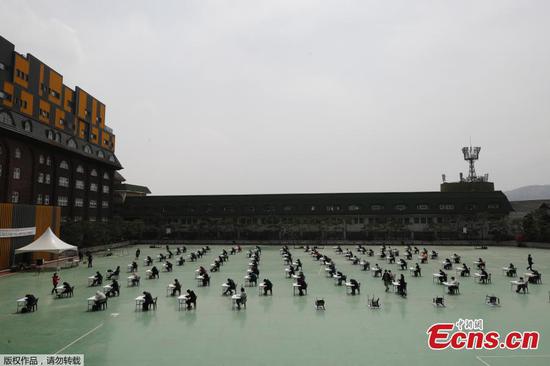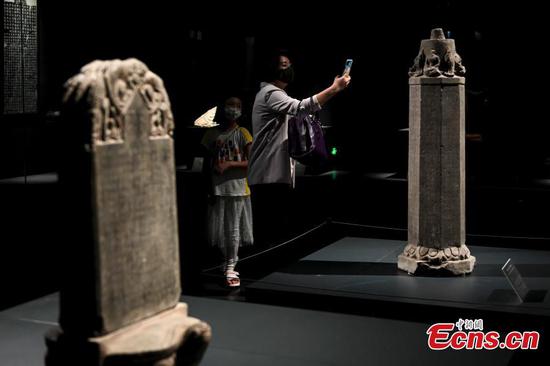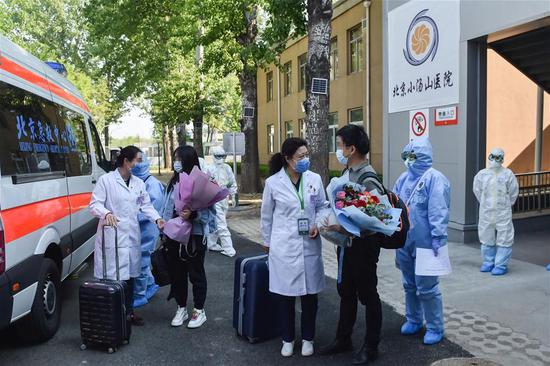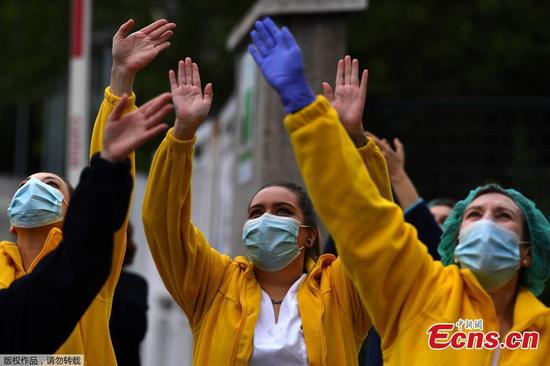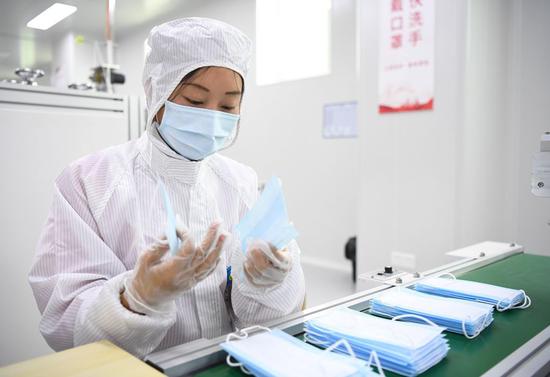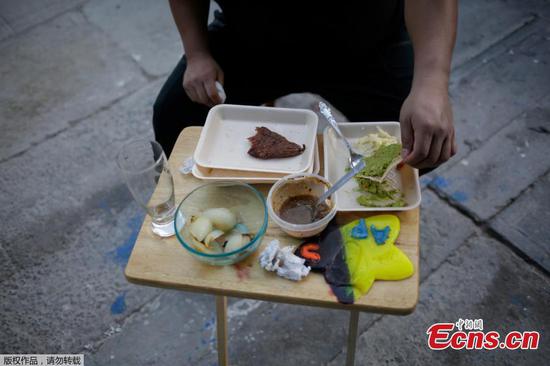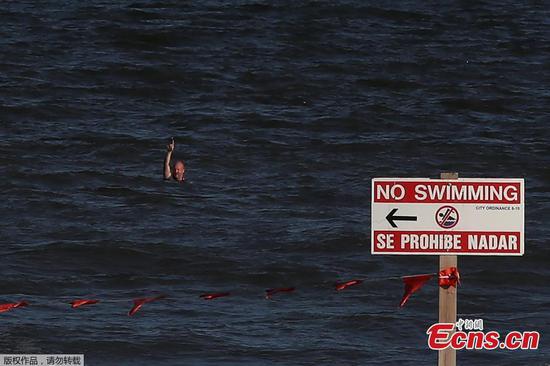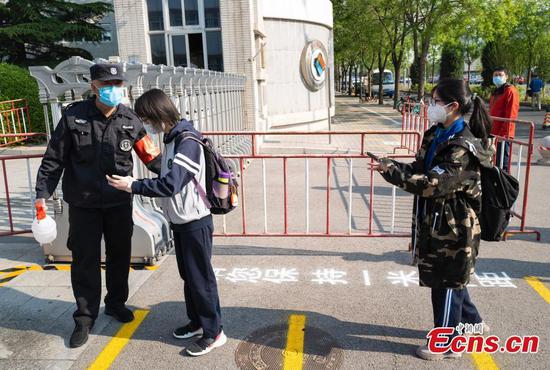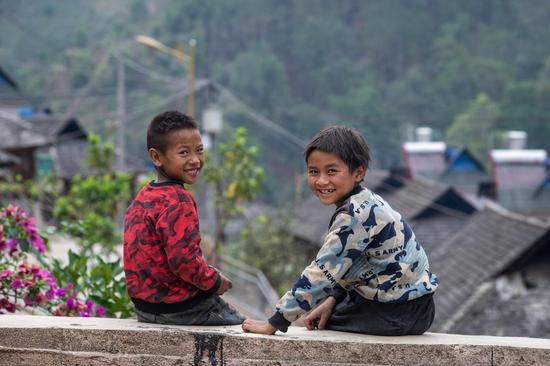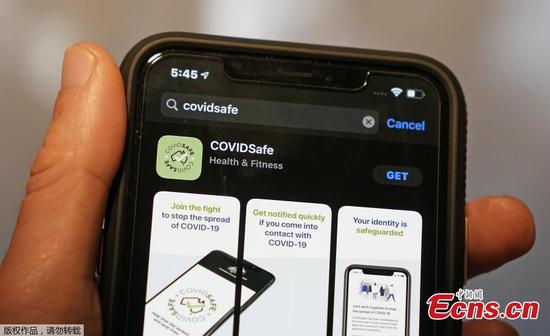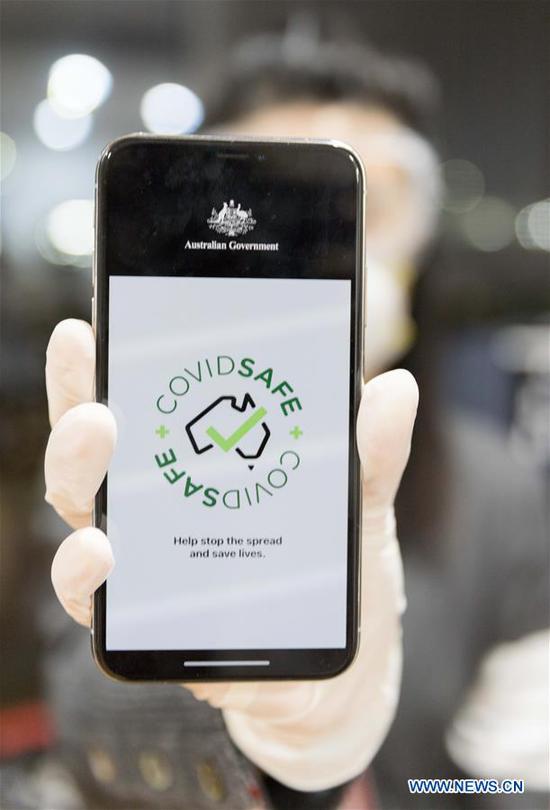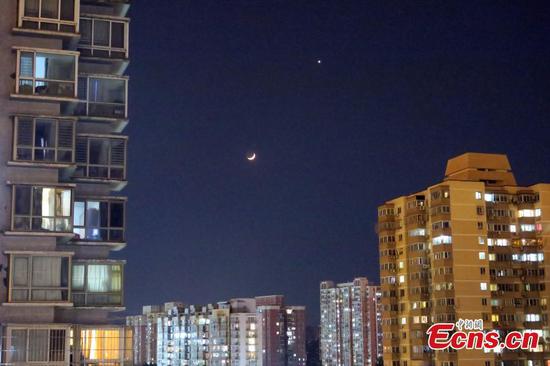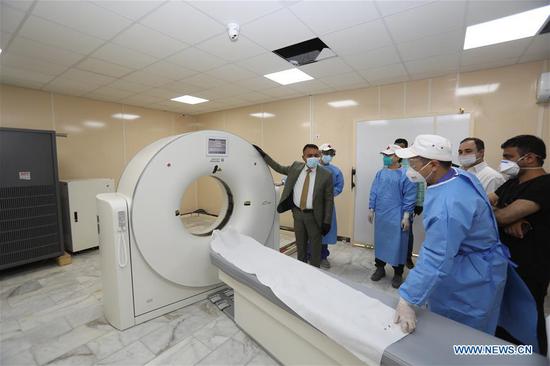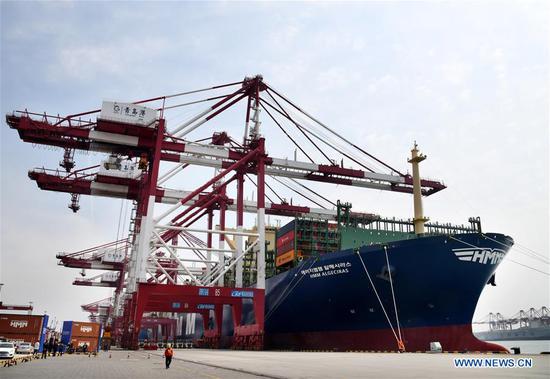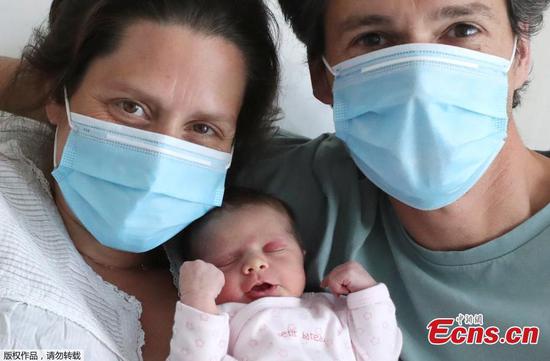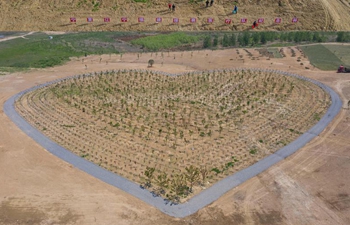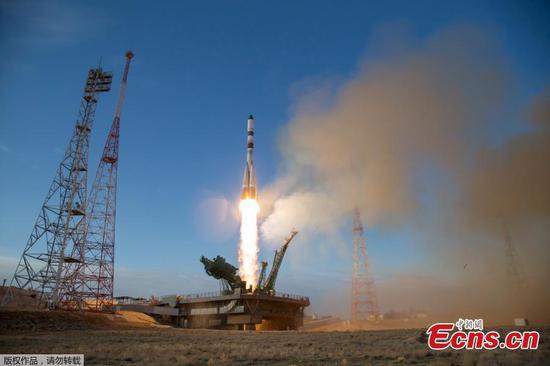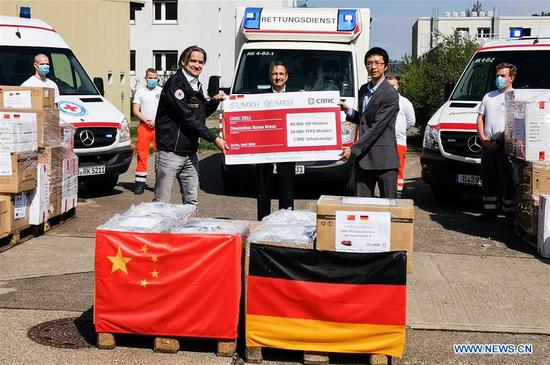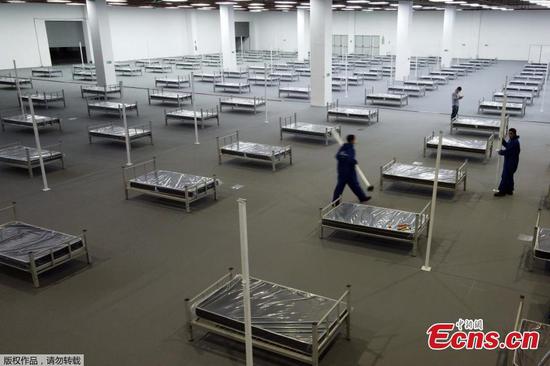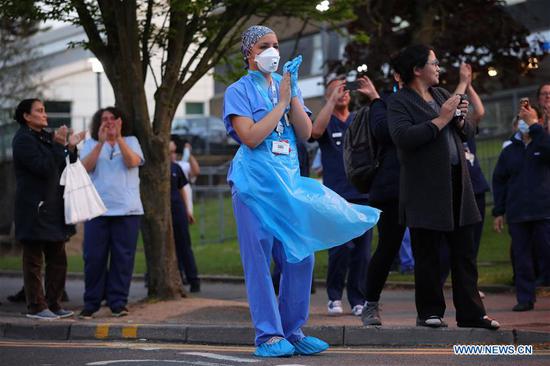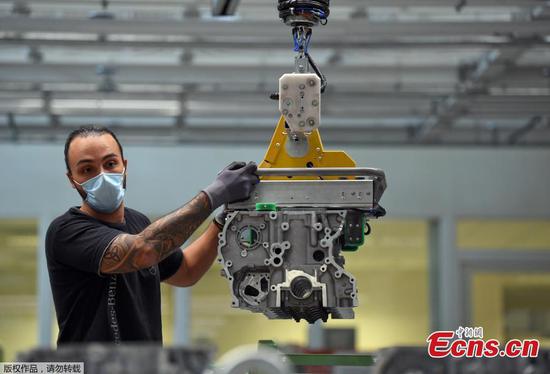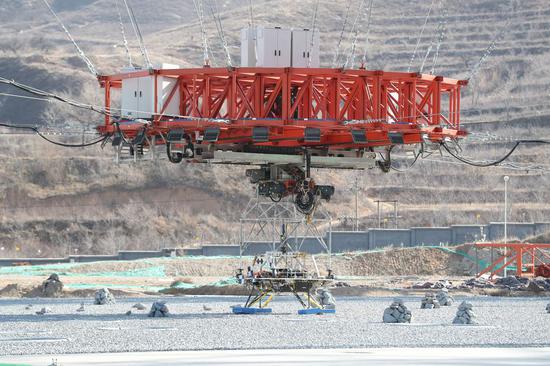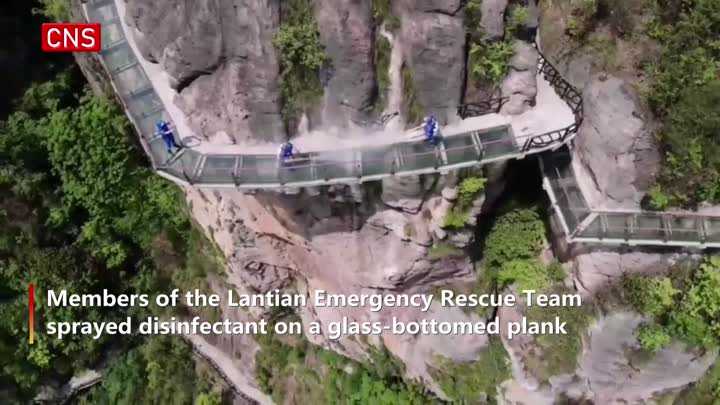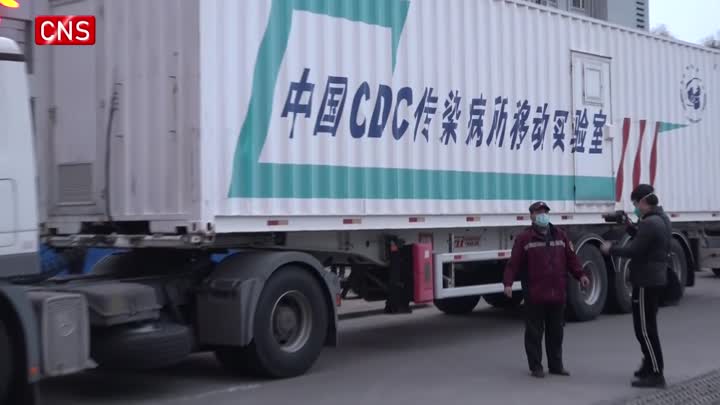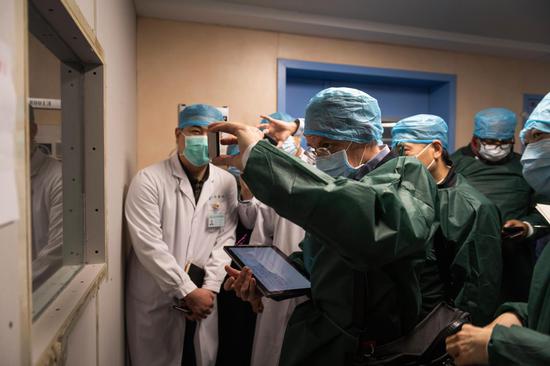
Members of the China-WHO joint novel coronavirus epidemic inspection team visit the Wuhan Tongji Hospital's Guanggu branch in Wuhan on Feb 23.(Photo by Pan Songgang/For China Daily)
China has shared info about virus with world in timely manner since beginning
Editor's note: As the number of hospitalized COVID-19 patients has dropped to zero in Wuhan, the Chinese city that was hardest hit by the novel coronavirus pandemic, China Daily will publish a series of three stories starting on Wednesday to share front-line experts' views on key issues such as whether China has ever attempted to conceal epidemic information from the world, when the turning point of the epidemic occurred and how China has managed to keep its low death toll.
Has China concealed epidemic information from the world? While being asked the question, Jiao Yahui, an official responsible for medical administration and supervision at the National Health Commission, China's top health authority, gave a definitive "no" without any hesitation.
"If China had ever wanted to hide its COVID-19 death toll, it wouldn't have published the revised death figure in Wuhan, which jumped about 50 percent compared to the previous figure," she said in Wuhan, Hubei province, during an exclusive interview with China Daily on Friday.
"China has never, ever intentionally concealed epidemic information from the world. Both the revised death toll and the number of confirmed cases in the city have increased, which shows that we want to share the fact with the world and be transparent."
On April 17, the Wuhan government revised the death toll in the city from 2,579 to 3,869 after local authorities had the opportunity to correct some inaccuracies in reporting that occurred in the early stages of the outbreak. By the end of Monday, the COVID-19 death toll on the Chinese mainland stood at 4,633, of which about 83 percent were in Wuhan, according to the National Health Commission.
"Actually, during the revision of the death toll, we've seen certain casualties that had been reported multiple times via our epidemic reporting system by more than one medical institute, because they have all treated the patients, so we have to write off the duplication," Jiao said.
The revision also shows that the data in the system is reliable and transparent, and medical institutes can directly report confirmed cases and the death toll independently, she added.
There are two reporting systems for medical workers to report an epidemic in China: One allows them to report more than 30 identified infectious diseases and the other to report pneumonia of unknown origin, which was established to cope with the severe acute respiratory syndrome outbreak in China in 2003. The alarm for COVID-19 was sounded via the latter, Jiao said.
Zhang Dingyu, president of Jinyintan Hospital-a hospital specializing in infectious diseases and the first designated hospital for COVID-19 in Wuhan-witnessed how the alarm was sounded.
On Dec 27, 2019, a doctor at Hubei Provincial Hospital of Integrated Chinese and Western Medicine reported three pneumonia cases of unknown origin to the Center for Disease Control and Prevention at Wuhan's Jianghan district. This was the first time that Chinese authorities obtained information about the disease.
At 11:30 pm on Dec 29, six patients with pneumonia of unknown origin were transferred to Jinyintan Hospital. "After consultation with epidemiologists, we filed their cases on the system for reporting pneumonia of unknown origin straight away. We just followed the protocol," Zhang said in an exclusive interview with China Daily on Thursday.
On Dec 30, the Wuhan Health Commission issued an urgent notice asking all medical institutions in the city to report patients with pneumonia of unknown origin. On Dec 31, the commission released a briefing on its website about pneumonia of unknown origin, confirming 27 cases and telling the public not to go to enclosed public spaces or hold gatherings. On the same day, experts from the National Health Commission arrived in Wuhan to investigate the cases.
"After the new virus was identified and listed as source of an infectious disease, we then started to use the routine system to report COVID-19 infections," Zhang said.
"In China, it's the responsibility of medical workers to report infectious diseases to the local centers for disease control and prevention. The information will then be verified and then sent to the Chinese Center for Disease Control and Prevention," he said.
Jiao said that reporting infectious diseases doesn't need to go through any other government bodies. The data will be directly collected by CDCs at different levels. The system was designed to avoid interference from outsiders.
Information sharing
Jiao said China has been sharing epidemic control information with the world in a timely and transparent manner since the very beginning of the outbreak.
On Dec 31, the WHO China Office was informed of pneumonia cases of unknown origin detected in Wuhan, according to the WHO.
Starting on Jan 3, China has been regularly informing the WHO as well as relevant countries and regions about the outbreak.
On Jan 8, an expert evaluation team from the National Health Commission initially identified a new coronavirus strain as the cause of the epidemic.
On Jan 12, China submitted the genome sequence of the novel coronavirus to the WHO, which was published by the Global Initiative on Sharing All Influenza Data and shared globally.
"China has been taking a closed-book exam on containing the outbreak while it is an open-book exam for the rest of the world due to the information and experience shared by China," Jiao said. "Many countries could have developed diagnosis kits then to find infected people, but they missed the window period."
As the COVID-19 death toll has been surging around the world, people started to question if there were still unreported cases in China. Jiao said the number of patients at fever clinics in Wuhan can explain the situation.
When the epidemic situation was grim, the fever clinics in the city-the outposts of epidemic control-dealt with more than 14,000 people a day. Now the number has dropped to between 200 and 300, she said.
"If there are still unreported cases, people will of course seek treatment at fever clinics. You cannot stop them," she said.









